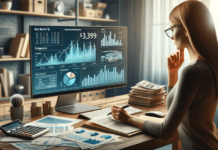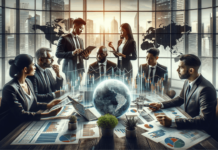Homeownership costs can often feel overwhelming, but managing them effectively is key to financial stability. This article aims to provide seven essential tips to reduce these costs without compromising your lifestyle.
By applying these strategies, you'll gain insights into smarter financial decisions for your home. Understanding and implementing these tips will lead to noticeable savings and a more secure financial future.
Homeownership Costs: An Overview
Homeownership costs encompass more than just your mortgage; they include property taxes, insurance, maintenance, and utility bills. These expenses vary depending on location, home size, and age.
Regular maintenance and unforeseen repairs can add up quickly, significantly impacting your budget. Utility costs also fluctuate seasonally and are influenced by your home's energy efficiency.
Overall, these costs represent a continuous financial commitment for homeowners. Effectively managing them is crucial for long-term financial health.
Why Managing Homeownership Costs Matters?
Managing and reducing homeownership costs is vital to prevent financial strain. It allows for more financial freedom and stability. Homeowners can allocate funds towards savings, investments, or other financial goals by reducing these expenses.
Timely management of these costs also helps maintain or increase the property's value. It's not just about cutting costs; it's about thoughtful financial planning for the future.
Understanding Your Mortgage Options
Mortgages are a cornerstone of homeownership costs. Knowing your options helps make informed decisions aligning with your financial goals.
Fixed-Rate vs. Adjustable-Rate Mortgages
A fixed-rate mortgage offers stability with a consistent interest rate and monthly payments for the loan's duration. In contrast, an adjustable-rate mortgage (ARM) has a fluctuating interest rate, which means variable payments.
ARMs typically start with lower rates than fixed-rate mortgages, making them appealing initially. However, the uncertainty of rate changes can impact long-term budgeting.
Understanding your financial situation and risk tolerance is key in choosing these options. Both have pros and cons; the right choice depends on your financial goals and circumstances.
Benefits of Refinancing for Lower Rates
Refinancing your mortgage can lead to significant savings, especially when interest rates are low. It replaces your current mortgage with a new one, often with a lower interest rate.
This can reduce your monthly payments and the total interest paid over the life of the loan. Refinancing can also help change the loan term or switch from an adjustable-rate to a fixed-rate mortgage.
However, it's important to consider refinancing costs and ensure the long-term benefits outweigh these expenses. Homeowners should carefully evaluate their financial situation and goals before deciding to refinance.
Energy Efficiency Improvements
Improving your home's energy efficiency is a smart way to reduce utility bills. It's an investment that pays off over time.
Upgrading to Energy-Efficient Appliances
Energy-efficient appliances consume less energy, leading to lower utility bills. Look for ENERGY STAR-rated products, which are certified for efficiency.
Upgrading to energy-efficient HVAC systems, water heaters, and refrigerators can significantly impact. These appliances may cost more upfront, but the long-term savings justify the investment.
Additionally, some utility companies offer rebates for purchasing energy-efficient appliances. This upgrade not only reduces your environmental footprint but also enhances the value of your home.
Cost Savings from Energy Improvements
Investing in home energy improvements leads to substantial cost savings. Insulating your home correctly reduces heating and cooling expenses.
Energy-efficient windows and doors prevent heat loss and improve temperature regulation. Installing solar panels can significantly cut down electricity bills. Smart thermostats help in optimizing energy usage.
Even simple changes like using LED light bulbs can add to the savings. These improvements contribute to a noticeable reduction in your homeownership costs.
Regular Home Maintenance: The Basics
Regular maintenance is critical to avoiding more extensive, more expensive repairs down the line. It's an essential aspect of responsible homeownership.
Avoiding Major Repairs Through Regular Upkeep
Consistent maintenance is crucial for preventing significant repairs, which can be costly. Regularly checking and repairing roofing, plumbing, and electrical systems can prevent severe issues.
Seasonal maintenance, like cleaning gutters and inspecting heating systems, is also essential. Neglecting minor repairs can lead to more significant problems, increasing overall costs.
Homeowners should create a maintenance schedule to ensure all critical areas are regularly inspected and maintained. Remember, prevention is always better and cheaper than a cure.
Cost-Effective Maintenance Tips
Maintaining your home doesn't have to be expensive. Here are some tips for keeping costs down:
- DIY Basic Repairs: Learn to do simple repairs yourself, like fixing leaky faucets or patching drywall.
- Regular Inspections: Conduct seasonal inspections to catch and address issues early.
- Preventative Measures: Implement preventative measures like cleaning drains to avoid clogs.
- Quality Materials: Use quality materials for repairs to avoid frequent replacements.
- Professional Help for Major Issues: For complex issues, hiring a professional is more cost-effective in the long run.
- Maintenance Schedule: Keep a regular maintenance schedule to stay on top of necessary tasks.
Property Tax Assessment: Getting Started
Property tax is a major part of homeownership costs. Understanding and managing it effectively can lead to significant savings.
Understanding Property Tax Calculations
Property taxes are based on the assessed value of your home, which the local tax assessor determines. Depending on location, home size, and improvements made, this value may not always reflect the current market value.
Tax rates vary by locality and are applied to the assessed value to calculate your annual tax bill. Reviewing your property tax bill for accuracy is essential, as errors can lead to overpayment.
Regular reassessment occurs, but the frequency varies by jurisdiction. Understanding these calculations helps in planning your annual budget more effectively.
How to Appeal for a Lower Assessment?
If your property's assessed value is too high, you can appeal for a reassessment. Start by gathering evidence of your home's value, such as recent sales of similar properties in your area.
File an appeal with your local tax assessor's office within the deadline specified in your tax bill. In the appeal, clearly state your case and present your supporting evidence.
You may also consider hiring a property tax consultant or an attorney specializing in property tax appeals. Successful appeals can lead to lower property taxes, thus reducing your overall homeownership costs.
Smart Home Insurance Choices
Choosing the right home insurance is crucial for financial protection. It's about finding the best rates and adequate coverage.
Comparing Insurance Providers for the Best Rates
To find the best insurance rates, compare quotes from multiple providers. Consider factors like deductibles, coverage limits, and exclusions. Check the financial stability and customer service records of the insurance companies.
Don't hesitate to ask for discounts, especially if you have installed security systems or bundle multiple insurance policies. Remember, the cheapest option isn't always the best. Balancing cost with the reliability and coverage offered is key to intelligent choice.
Importance of Adequate Coverage vs. Cost
While finding affordable insurance is important, ensuring adequate coverage is crucial. Underinsuring your home can lead to significant financial losses in case of damage or disaster.
Assess your home's value accurately and consider additional coverages for risks specific to your area, like floods or earthquakes. Review and update your coverage periodically, especially after major renovations or changes in property value.
Adequate coverage ensures peace of mind, knowing you're protected against potential financial burdens.
DIY vs. Professional Services: Making the Choice
Deciding between DIY and professional services affects both cost and quality. It's important to know when to tackle projects yourself and when to hire experts.
When to DIY and When to Hire Professionals?
DIY projects can save money but require the right skills and tools. Simple tasks like painting or basic landscaping are great for DIY.
However, hiring professionals is safer and more efficient for complex projects involving plumbing, electrical work, or structural changes.
Assess your abilities realistically and consider the risks involved in DIY projects. Remember, mistakes can lead to higher costs in the long run if professional repair is needed.
Balancing Cost and Quality of Work
Balancing cost and quality is crucial in home maintenance and improvement. Cheap fixes might save money initially but can lead to more expensive repairs later. Invest in quality materials and skilled labor for critical tasks.
Get multiple quotes for professional services and check references to ensure quality work. Regular professional maintenance can prevent costly repairs and maintain your home's value.
Ultimately, investing in quality materials pays off in the longevity and safety of your home.
Final Thoughts: Streamlining Homeownership Costs
Effectively managing homeownership costs leads to significant long-term savings. You can significantly reduce these expenses by making informed decisions on mortgages, taxes, and maintenance.
Strategic upgrades and thoughtful planning are pivotal in achieving a financially secure homeownership. This approach not only cuts costs but also enhances your overall living experience.




